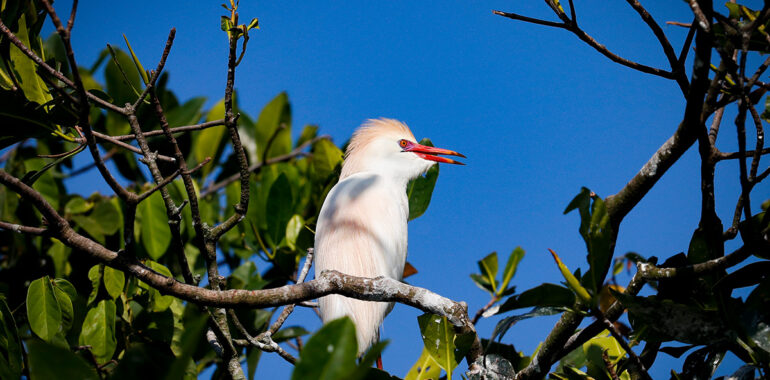Valentine’s Day is a good day to celebrate love, affection, friendship and all types of relationships, from the most beneficial to those that could be a little harmful. There is no better way to do this than by talking about the relationships that exist in nature and in the ecosystems that surround us. Scientifically, relationships in nature are known as symbiotic relationships. Organisms in nature form these relationships not based on love, but on survival. So while we deliver letters, candy, chocolates, and lots of hugs to show our human love, relationships in nature involve very different foundations than ours.
Symbiosis is the term we use in biology for the intimate interactions, relationships or associations between organisms of different species to mutually benefit or not in their vital development. Symbiosis can be obligatory, meaning that one or more organisms depend on each other to survive; or facultative, when they can generally live independently. Despite being a term with much debate, it has been applied in a wide range of biological interactions among which three of them are the most studied and can be distinguished in the categories of commensalism, mutualism, and parasitism.
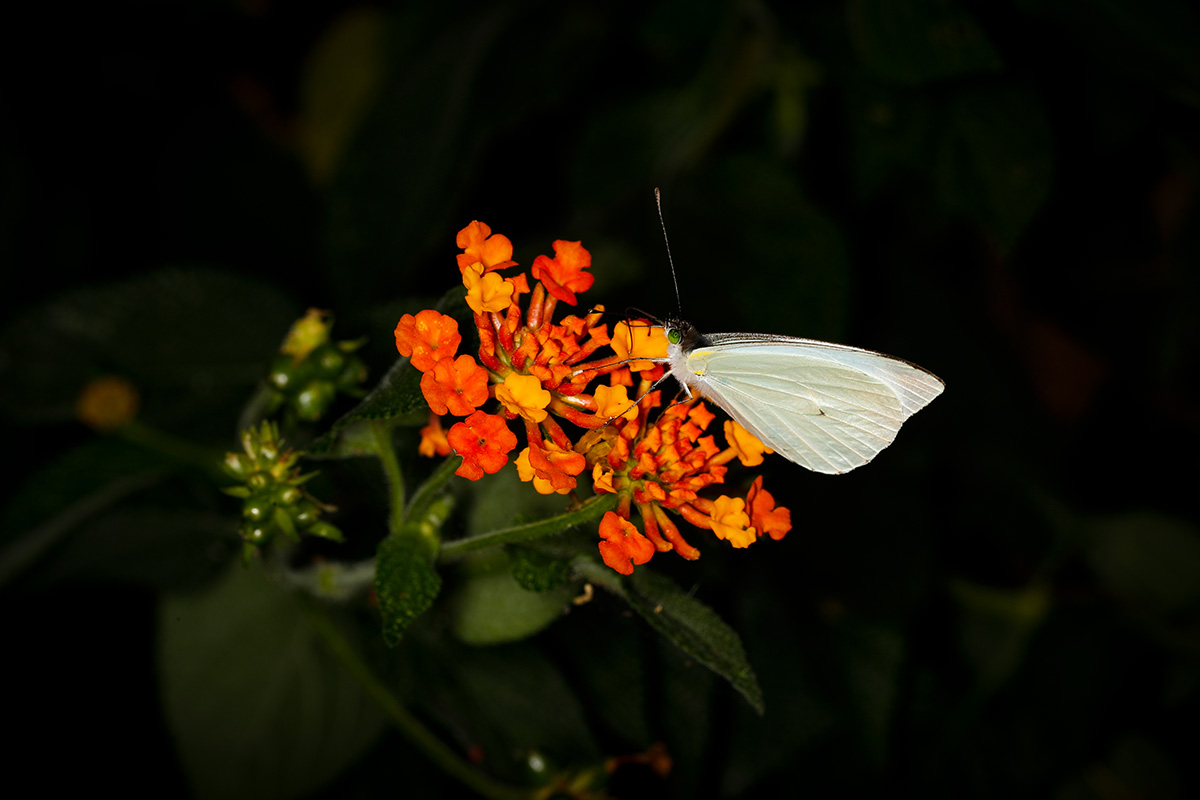
Leptophobia aripa butterfly pollinating Lantana camara flowers.
Photography by: Erick Flores, FLAAR Mesoamerica, Jan. 2, 2018. FLAAR Mesoamerica Garden, Guatemala City.
Commensalism
Commensalism is the type of relationship where one of the two organisms obtains a benefit and the other is neither benefited or harmed. The term originates from the Latin cum mensa which means “eating at the same table” or “sharing a table” and was used to describe the use of waste food by a second animal such as scavenger species. Therefore, the commensal benefits from this relationship to obtain food, shelter, support, or simple locomotion from the host species. This interaction could be compared with one-sided or codependent relationships, but we prefer to leave it up to you.
A very cute example of a commensalistic relationship occurs between cows and a group of birds commonly known as “cattle egrets”. As their name implies, these long-legged birds from the Bubulcus genus are often found on the same grassfields as cows. The egret forages through the pastures on which cows graze on, due to the fact that the cows’ movements flush out the egret’s prey (usually insects and other invertebrates, small amphibians and reptiles). These two make a quirky couple, in some cases egrets can be found ON TOP of a cow, while the latter seems completely unbothered. This is not necessarily to spend more quality time as a couple, but rather for the egret to feed off of ticks and other insects living on the cow’s hair.
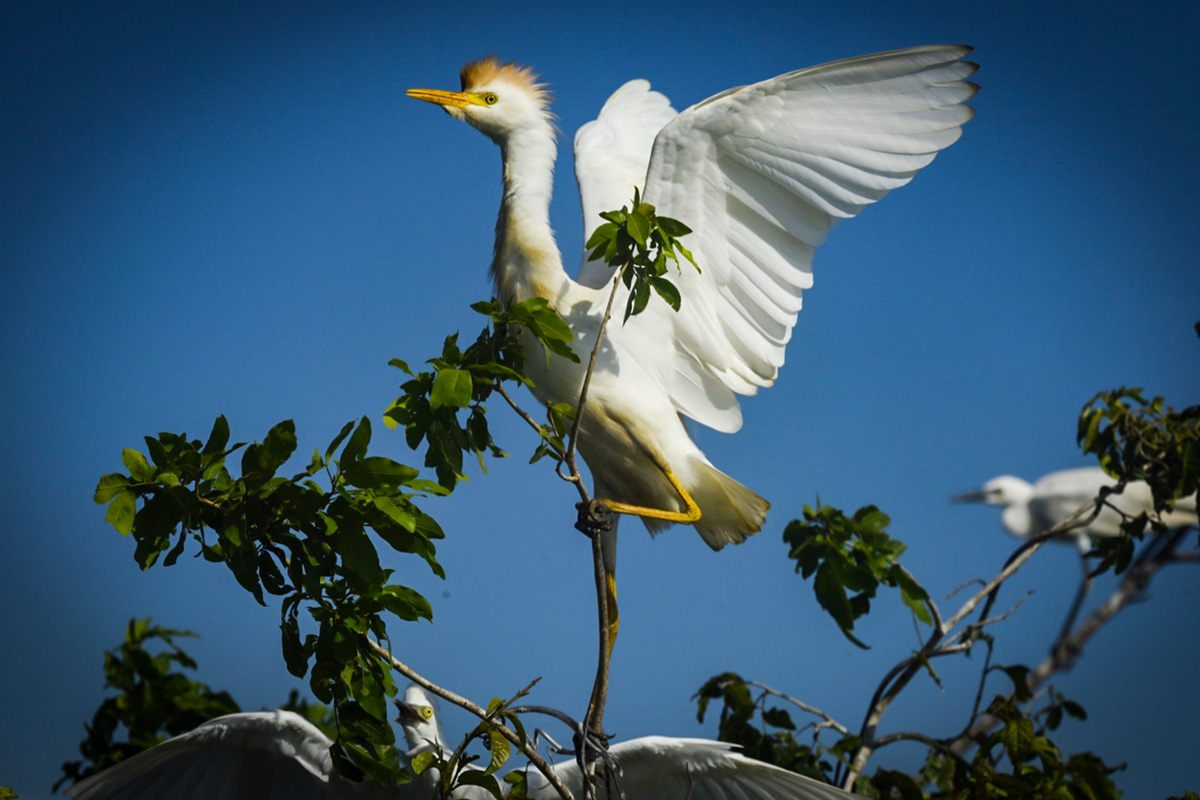
Bubulcus ibis performing for the camera.
Photography by: Nicholas Hellmuth, FLAAR Mesoamerica, Jun. 19, 2021. Río Dulce, Livingston, Izabal, Guatemala.
Commensalism is also very common in the Plantae Kingdom. We have all been in the presence of this relationship, although some might not notice them since they don’t necessarily catch your eye like an egret on a cow. “Epiphytes” is the name for non-parasitic plants that grow on other live plants, for example on trees. Bromeliads, orchids, mosses, and ferns are among the most common epiphytes. A single host tree can be the home of thousands of individual plants, with a diversity of over one hundred different species. The tree is able to benefit hundreds of epiphytes by providing spots with the optimal protection, humidity, sunlight or shade each one of them needs, without them causing any harm to its host.
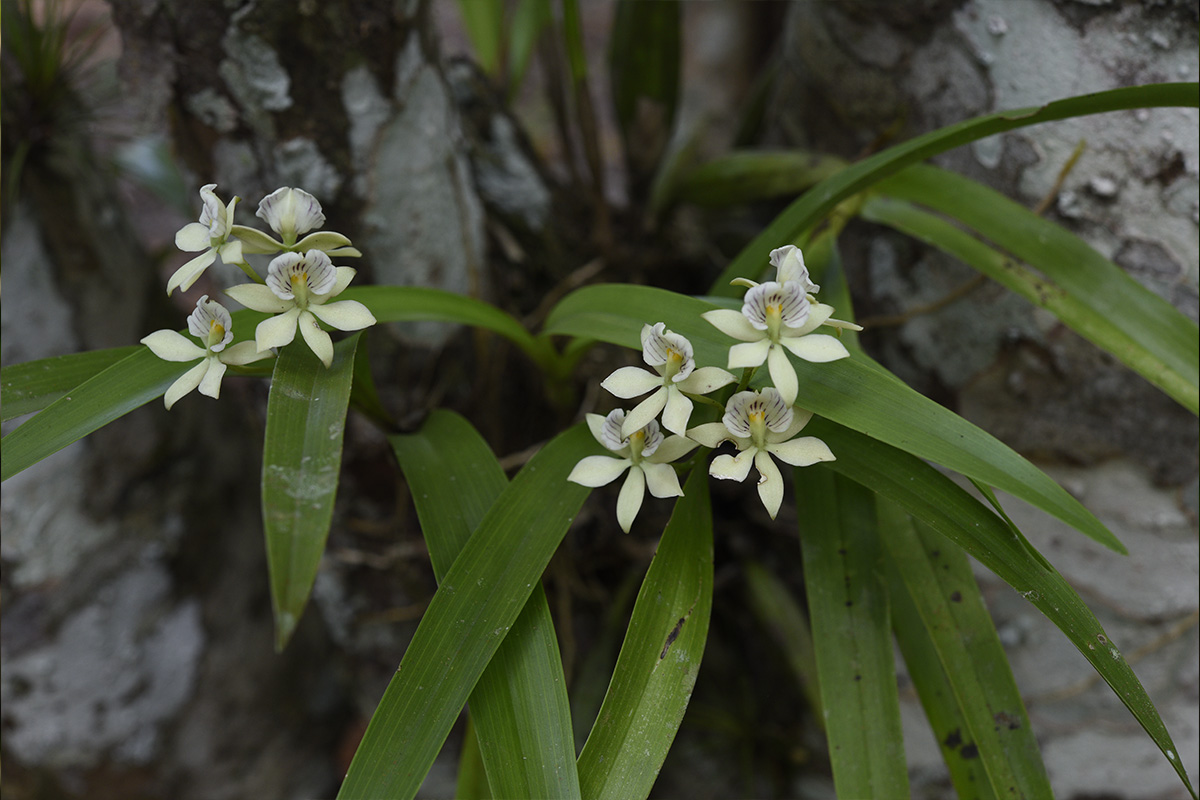
Tiny Encyclia radiata orchids sitting on a tree.
Photography by: Nicholas Hellmuth, Oct. 8, 2018. Yaxha Nakum and Naranjo National Park, Petén.
Mutualism
Mutualism describes the ecological interaction between two or more species where each one has a net benefit. These actions occur in a similar way between members of the same species and are known as cooperation, but they should not be confused. This type of relationship is quite intimate and very interdependent since both parties rely on each other. Therefore, we consider this to be the healthiest relationship in nature because it creates a sense of cooperation and mutual support. In mutualism there are subtypes of relationships, there are those that function as a barter or biological exchange since they exchange one resource for another resource. There are also those that exchange services for resources and those that exchange services for services. For those reasons, this is an interaction that plays a fundamental role in ecology and evolutionary biology.
The relationship responsible for most of our Valentine’s Day flowers is the perfect example of mutualism, the love between pollinator bees and hundreds of species of flowering plants. Bees consume the pollen or nectar provided by the flower, and in return, while eating, the furry insect gets covered in pollen which then gets dispersed to other plants of the same species, resulting in a beautiful act of love called pollination. Both parties are extremely benefited by this interaction, so much that one wouldn’t exist in the same way without the other. In fact, bees and angiosperms have evolved together for millions of years, and this mutualistic relationship is considered to be a determining factor for the great diversity of angiosperms that exists nowadays.
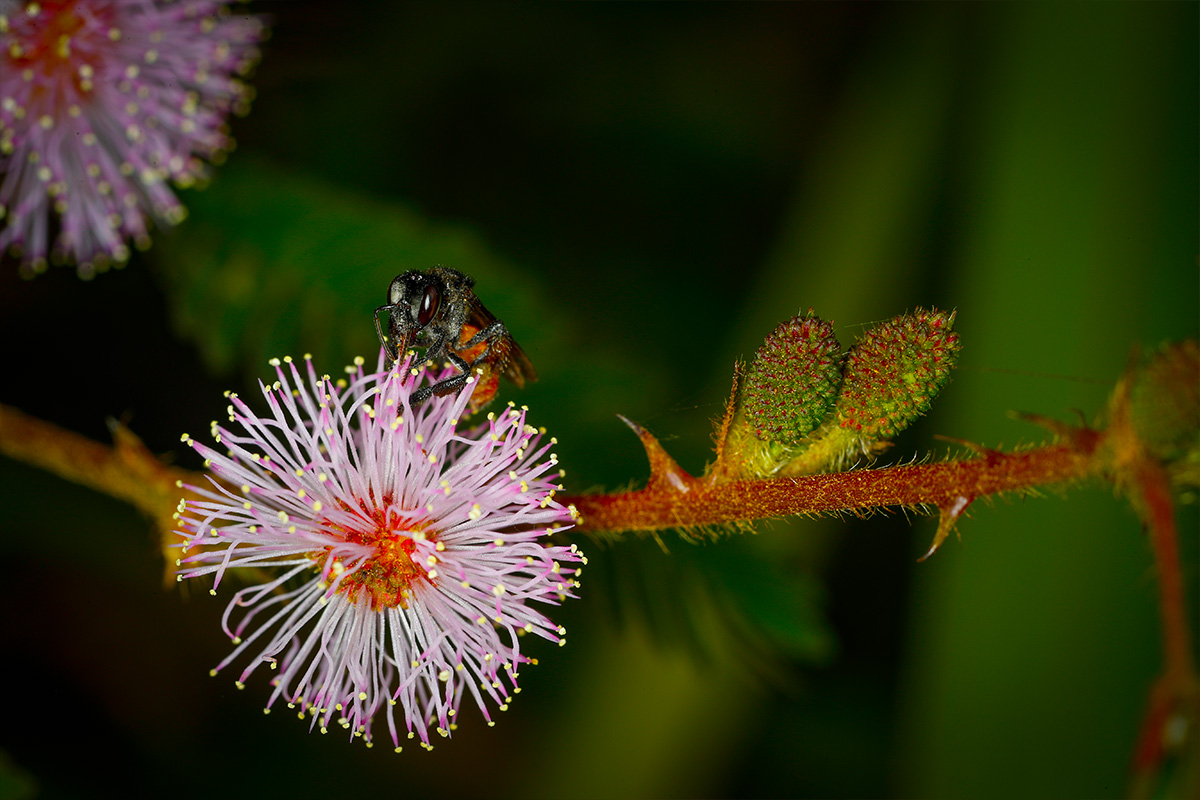
Trigona fuscipennis visiting a Mimosa flower. Photography by: Erick Flores, FLAAR Mesoamerica, Dec. 12, 2017. Cahabón, Alta Verapaz, Guatemala.
Earlier we heard about lichen as a commensalistic guest on trees, but lichen itself is an extraordinary example of mutualistic symbiosis. Lichen is actually not a plant, which is a common misconception; lichen is a stable symbiotic relationship between fungi (mycobiont) and algae and/or cyanobacteria (photobiont). Since algae and cyanobacteria are both photosynthetic, they are able to provide essential carbon compounds for the fungi to feed on. Fungi, on the other hand, may not be able to produce these compounds to feed on, but it is capable of providing water and mineral nutrients, plus protection from the harsh outside world. Together they make a perfect couple, one can’t live without the other. They could be called soulmates that transcend generations: growing, reproducing and dying together since the beginning of time (or over 300 million years ago, according to recent analyses of lichen fossils).
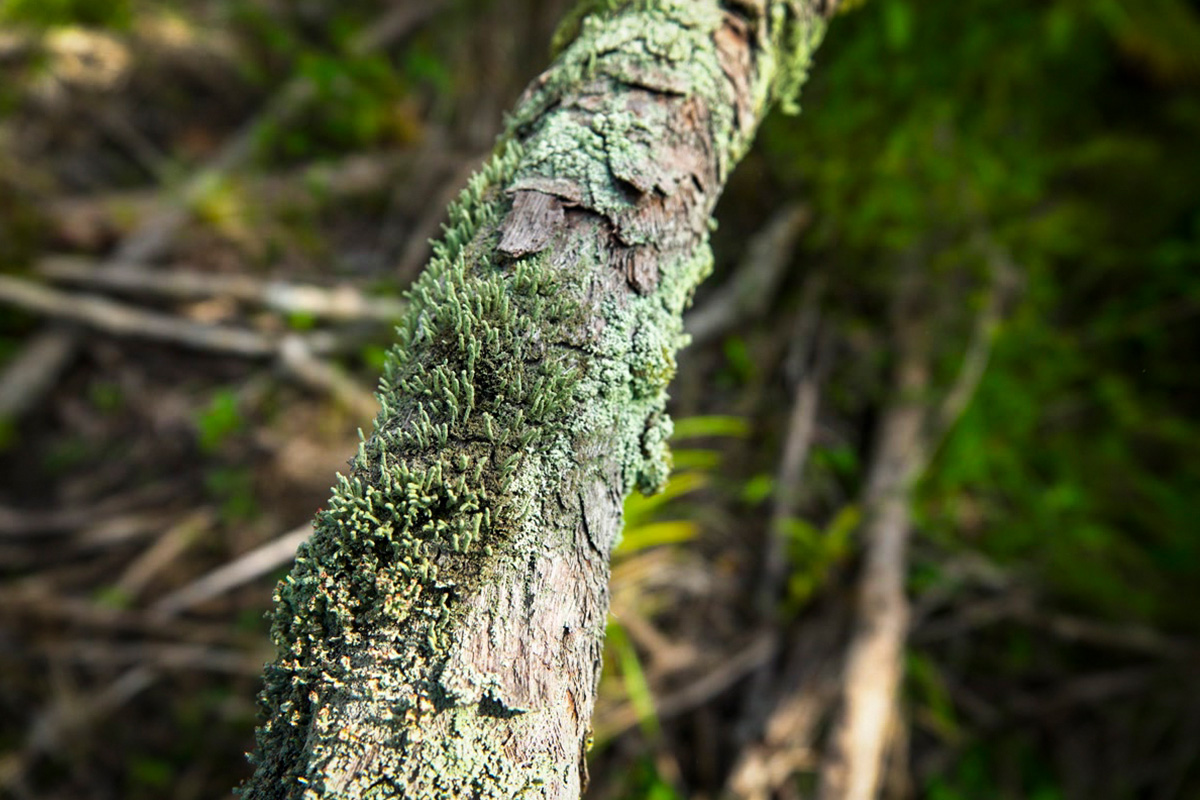
Mosses and lichen peacefully sharing a branch. Photography by: María Alejandra Gutierrez, FLAAR Mesoamerica, Dec. 19, 2018. Topoxté Island, Petén, Guatemala.
Parasitism
We all know that in toxic couples there is one who always takes advantage of the other, in nature we know this as parasitism. Parasitism is a type of relationship in which one of the two participants completely depends on the other and obtains a benefit. In this relationship, the host receives damage or harm from the parasite at some point in the cycle so the parasite expands its survival capacity by using other species to cover its basic and vital needs.
Mistletoes are hemiparasites, they usually live on stems and branches of other plants so they are easily observed. Plants of the Psittacanthus genus have an excellent relationship with their pollinators, however, not so much with their partner with whom they share a home. These penetrate the host’s vascular system and thereby consume its water and nutrients. This causes its host plant to have limited access to sunlight and nutrients and its vital structures begin to deform, which can be harmful to the plant, and even cause death.

Psittacanthus sp. parasitizing a tree.
Photograph by: Nicholas Hellmuth, FLAAR Mesoamerica, Oct. 8, 2018. Close to “Grupo Maler”, Road Sacbé, Yaxha Nakum and Naranjo National Park, Petén.
Fungi normally form symbiotic relationships with other organisms, but sometimes they benefit to the detriment of their host. Many species affect trees, other attack plants, and some could even attack mushrooms. Even animals, including humans, are susceptible to parasitic fungal infections. As we have said before, a parasite latches on to a host and exploits it for valuable resources necessary for its survival. The Cauliflower Fungus or species form the Sparassis genus grow on live and dead conifers trees. It grows massively at the base of pine trees, sometimes attaining a weight of several kg, causing brown rot but it does not cause death. Ironically and despite the fact that it is considered a parasite, in many cultures and places around the world it is an edible mushroom.

Sparassis sp. Cauliflower mushroom.
Photograph by: Maria Alejandra Gutiérrez, FLAAR Mesoamerica, Dec. 10, 2019. Hotel Posada Caribe, Arroyo Petexbatún, Sayaxché, Petén.
These three symbiotic relationships define how species interact with each other in nature, and survival is the driving force of them all. The inner workings of nature can be very complex and very different from our human relationships. Not everything is about giving gifts, hugs and chocolates, many times relationships involve tangled mechanisms that make us evolve day by day. However, on this Valentine’s Day we can celebrate all types of relationships, including those motivated by love or survival.
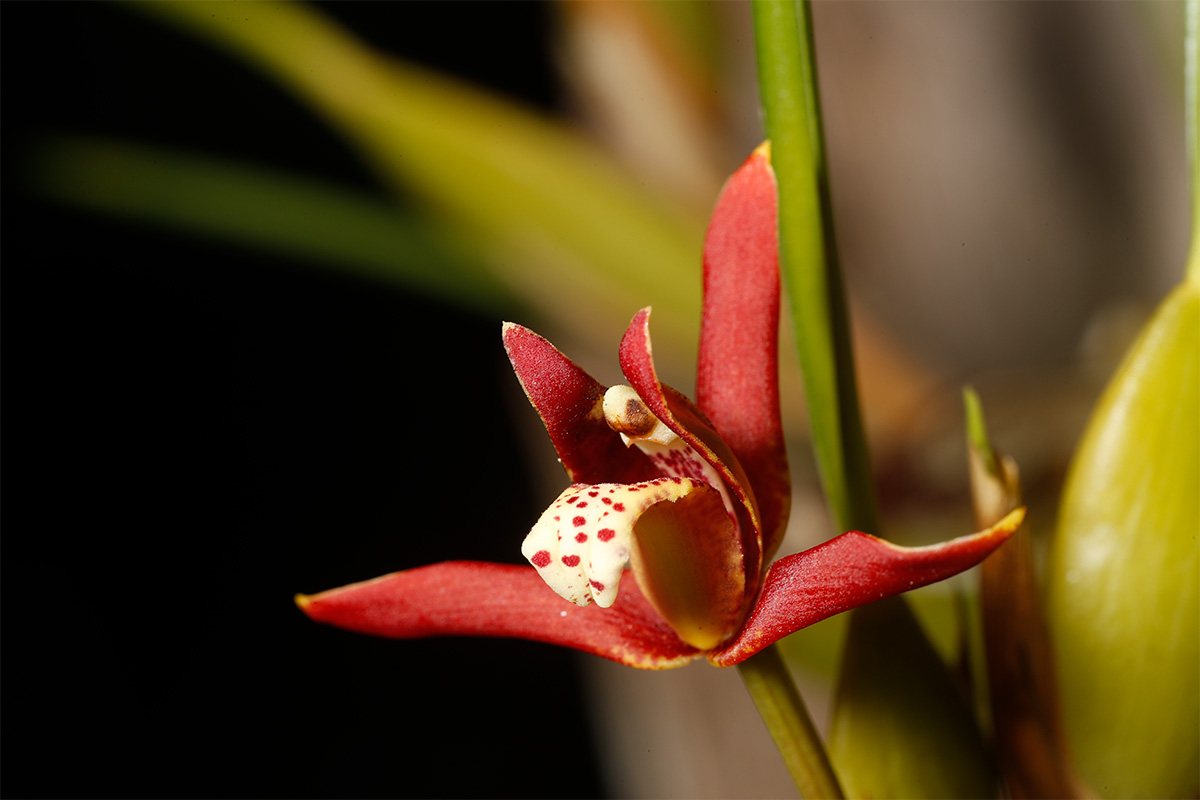
Coconut pie orchid, Maxillaria tenuifolia.
Photograph by: Erick Flores, FLAAR Mesoamerica, 2018. Hotel El Sombrero, Yaxhá, Petén.
References
- 2019
- Chapter 1 – Symbiosis and Parasitism. In Burton Bogiths, Clint Carter and Thomar Oeltmann (editors) Human Parasitology. Academic Press, Pages 1 – 14.
- 2018
- El género Psittacanthus (Loranthacea) en Veracruz, México. Acta Botanica Mexicana, No. 124.
- 2009
- Symbiosis: The Art of Living. In A. Varma and C. Kharkwal (editors) Symbiotic Fungi, Soil Biology. Springer-Verlag, Berlin Heidelberg.
- 2012
- Studies on the community ecology of cattle egrets Bubulcus ibis coromandus (Boddaert) in Jammu, India. International Journal of Biodiversity and Conservation, Vol. 4 No.13.Available online: https://doi.org/10.5897/ijbc11.105
- 2019
- Epiphyte-phorophyte relationships: assessing the differences between Seasonal Semi Deciduous and Swamp Forests in Southeastern Brazil. Hoehnea Magazine, 46(2).Available online: https://doi.org/10.1590/2236-8906-23/2018
- 2011
- Fossil bees and their plant associates. Cambridge University Press. Pages 103-164.Available online: https://doi.org/10.1017/cbo9781139014113.006
- 2019
- Evaluating the structure of commensalistic epiphyte–phorophyte networks: a comparative perspective of biotic interactions. Aob Plants, 11(2).Available online: https://doi.org/10.1093/aobpla/plz011
- 2021
- Biotechnological substances in lichens. Elsevier Books. Pages 249-265.Available online: https://doi.org/10.1016/b978-0-12-820655-3.00012-4
- 2006
- Exceptional Epiphyte Diversity on a Single Tree in Costa Rica. Selbyana Magazine, Selby Botanical Gardens Inc. Vol. 27 (1). Pages 65-71.Available online: www.jstor.org/stable/41760262
- 2022
- Medicinal, nutritional, and nutraceutical potential of Sparassis crispa s. lat.: a review.
- nd.
- Orchids, fungi and symbiosis.Available online: https://serc.si.edu/research/research-topics/biodiversity-conservation/orchids-fungi-symbioses#:~:text=Orchids%20and%20mycorrhizal%20fungi%20have,for%20all%20nutrients%2C%20including%20carbon
Written by Alejandra Valenzuela Cofiño and Flor Morales Arroyo.

